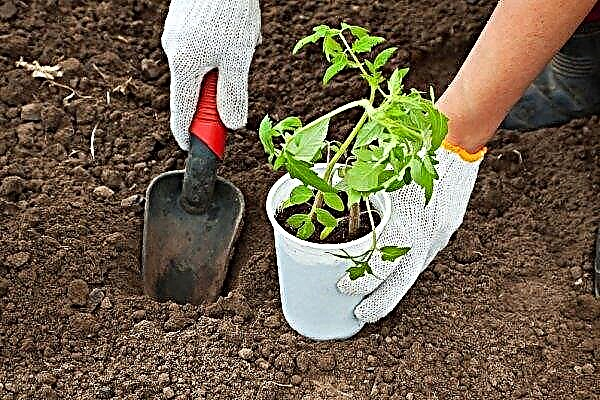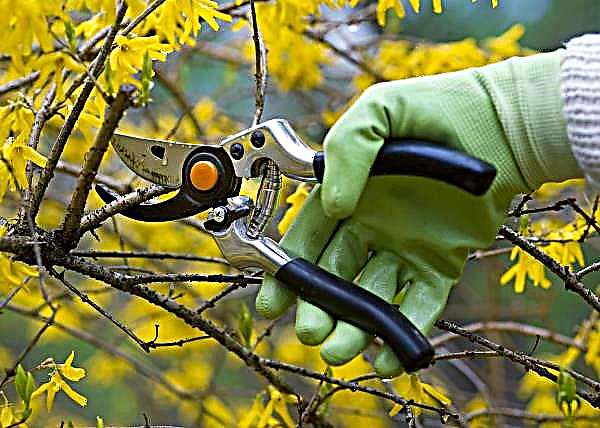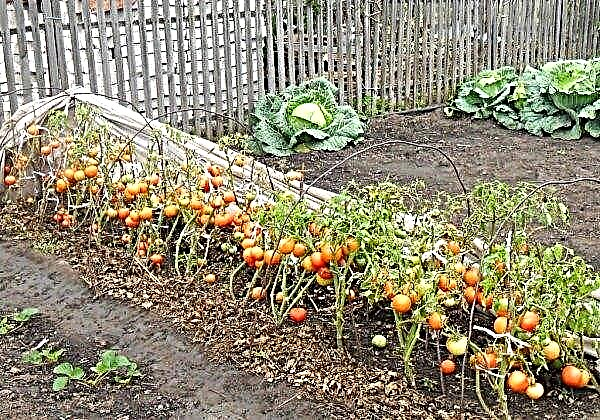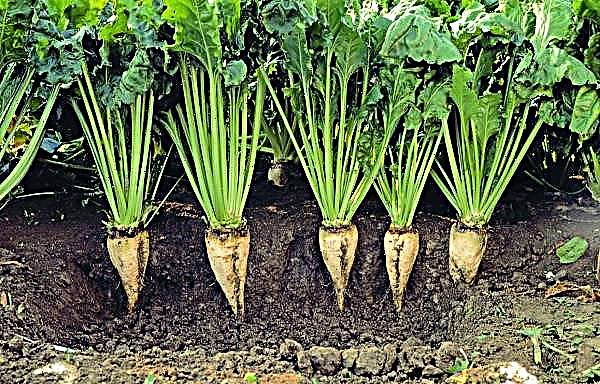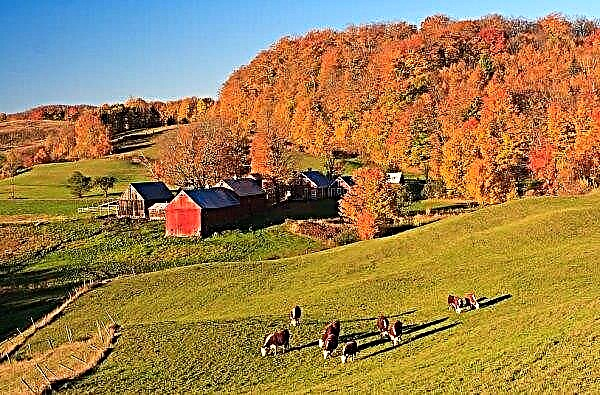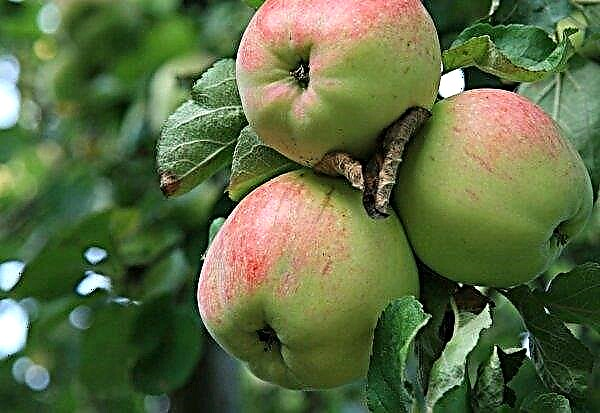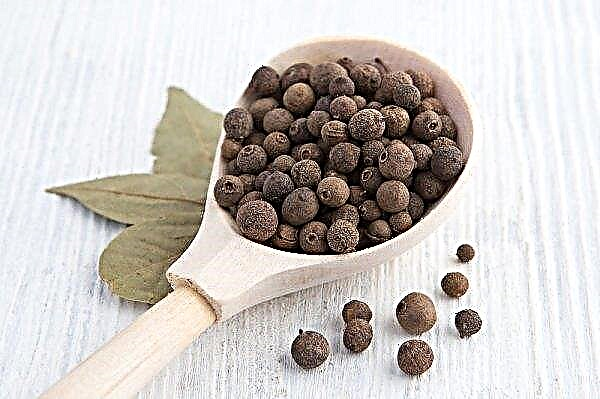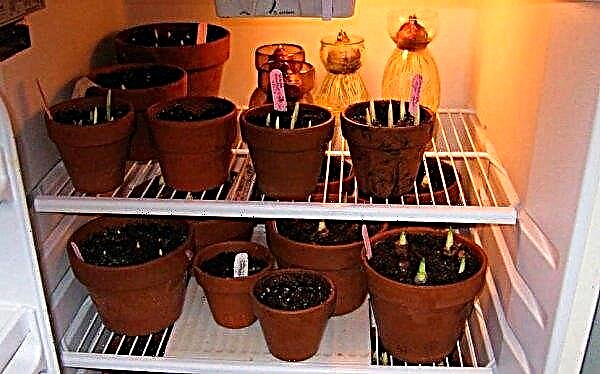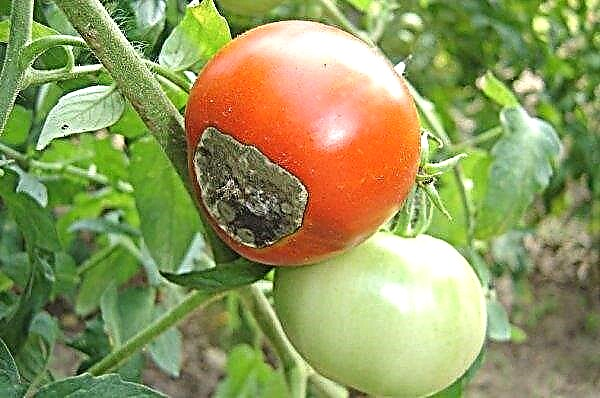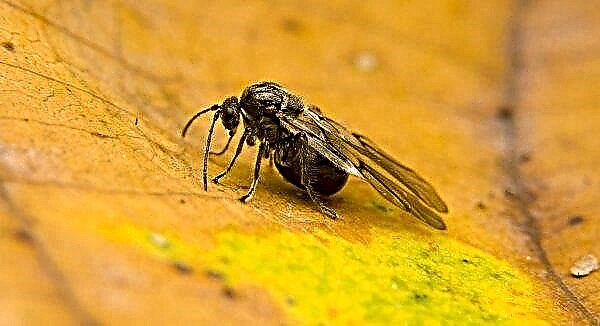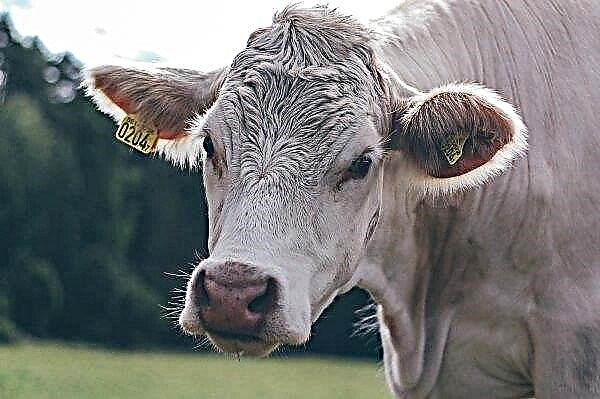Hearing the word pine, we often imagine a tall evergreen conifer. But small trees and small shrubs belong to this genus. Many of them will grow well in your summer cottage. Read more about how and when to plant and transplant a young pine, read in the material.
Pine transplant
The genus Pine unites about 130 species of forest plants of different sizes: small, reaching a meter height and large ship pines. They grow in the Northern Hemisphere in different climatic zones.
So, in the subtropics, representatives of this unpretentious genus, such as Caribbean pine, are found in the mountains in territories poor in useful substances. And in a temperate climate, they form large pine forests, although they can grow alone in open spaces. We can even meet them in the garden at the country cottage.
Did you know? The life expectancy of pine depends on the species and variety. The oldest known specimen was 4,800 years old.
When is it better to transplant
You can plant a pine in a permanent place at any time during the growing season: in spring, summer, autumn. The main thing is that the land does not freeze at the time of transplantation. Soft spring and autumn temperatures are always better tolerated by the plant than hot summer temperatures.
Transplantation is permissible only when pines, spruce, fir, cedars, Christmas trees and other conifers are at rest. It begins with the arrival of late autumn - in November. During the long winter months, the plant is not disturbed. The next suitable time for planting conifers will come in March, with the advent of spring.
During the long winter months, the plant is not disturbed. The next suitable time for planting conifers will come in March, with the advent of spring.
In the case when it comes to forest plants, it will be right to dig a tree on the same day when you are going to transplant it. The air temperature at the time of planting should be about + 5 ° C, and frost should not be expected on the soil.
If the plant was grown in a nursery and you purchased it at a risky time for planting, then leave it in the container before planting. Such trees are planted in the future when the period of frost has passed. In summer, it is better to avoid planting in July and August: because of the heat, the plant will need frequent watering.

What should be the soil
Remove grass and weeds. As a rule, the best technique of agricultural technology in this case is the preliminary spraying of the territory with a herbicide that destroys the roots, based on glyphosate. It can be drugs "Roundup", "Raskal". After a week, dead weeds are removed mechanically. But you need to plan this lesson in advance, about 3 months before planting trees in this place.
The site is dug to a depth of 0.5-0.7 meters and loosened. At the bottom of the prepared landing pit, drainage is necessarily laid. Deciding whether he is needed is very simple. Fill the pit with water to a depth of 30 cm and wait until it drains. If this requires more than 10 hours, it is necessary to create a drainage. If there is no way to do this, simply select a site with good water permeability.Important! Do not tamp the soil in the planting pit. Pine roots do not develop well in dense soil.
 As for acidity and other factors, pine trees grow even in extremely poor soils. In heavy clay soil, add ground sphagnum or other organics. In other cases, fertilizers are not necessary.
As for acidity and other factors, pine trees grow even in extremely poor soils. In heavy clay soil, add ground sphagnum or other organics. In other cases, fertilizers are not necessary.
What seedlings to choose
Young seedlings take root better than mature trees. For this reason, if you intend to dig a pine in the forest, then choose a young seedling, no more than a meter high. Together with him, take from the forest a couple of buckets of soil in which he was planted. Bacteria contained in the soil will contribute to better survival in a new place.
When buying a seedling in a nursery or other gardening organization, pay attention to differences in cost. The younger the seedling, the cheaper. In addition, the young seedling will take root much better. Before planting, be sure to check the roots: they must be healthy. It is better to prune broken ones before planting them in the ground.

Transplant process
The landing area should be located so that the tree is shaded after 4 pm. In addition, make sure that when the pine grows, it will not interfere with the buildings on the site and nothing will prevent it from growing up and in width.
Did you know? Walnut of Chinese white pine is moderately toxic: it creates a metallic taste in the mouth, which will pass in a couple of days. This condition is called “pine mouth syndrome” in medicine.
The transplantation process consists of the following steps:
- Dig a hole wider and larger than the diameter of the root ball.
- At the bottom, pour soil brought from the forest along with pine.
- Planting depth should be the same at which the tree grew before. Gradually adding soil, achieve the desired planting depth. If the plot is wet, then it is permissible to plant trees above the level at which they grew.
- Water the pine after planting.
- If necessary, set a stake to tie up the tree until it takes root.
 In the future, you will need to cover the basal zone with mulch. It can be wood chips and other materials. Mulch helps in the fight against weeds and the loss of water from evaporation.
In the future, you will need to cover the basal zone with mulch. It can be wood chips and other materials. Mulch helps in the fight against weeds and the loss of water from evaporation.Pines, like other coniferous seedlings, are prone to sunburn and dehydration. Therefore, even if you have a specimen that can grow in subtropical conditions, try to provide it with shadow and regular watering in the first months after planting. The best shade is a sheet of plywood over a seedling. Other materials are less effective.
Important! The plywood screen that you used to shade the seedlings in summer can serve as protection for it in the winter - from rabbits and other animals that eat young shoots.
What varieties are best used for personal plots
For transplanting to your site, it is better to choose an instance from the following varieties:
- Mountain pine (Pinus mugo) is a low tree that can grow anywhere. Its value lies in the fact that it is not too large in itself. And if you pinch the top, you can set the size to which it will grow.

- Familiar to all ordinary pine (Pinus sylvestris) is also suitable for growing in the garden. Of course, this is a tall tree, but it does not require special care.

- Common spruce (Picea abies) and Canadian spruce (Pyramidata) is also suitable for growing on the site. They do not exceed 4 m, have dense greenery and can grow in any conditions.

- European cedar pine (Pinus cembra) is characterized by great fluffiness and density. This small plant is different in that it grows very slowly, and you will have time to enjoy its compact form.
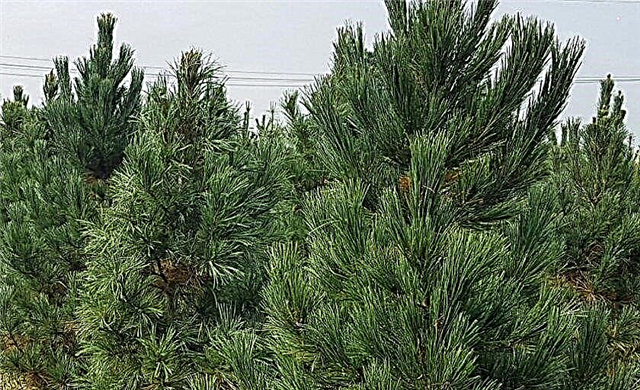
How to transplant a large pine
Transplanting mature trees is not worth it, as they take root only in 10-15% of cases. If you still decide to plant such a tree, then choosing it in the forest, take one that does not exceed a height of 70 cm. It is dug up by the diameter of the root zone (25 cm) and carefully removed from the soil, transporting home with an earthen lump.
If the tree needs to be transported far, then the roots are wrapped in a moist burlap and a plastic bag. The houses on the plot select a place with sandy soil. The required level of acidity of the earth is 5.5–6.5 pH. Landing is carried out according to general rules.

Transplant errors
The most common errors include everything related to the wrong choice of place or plant for planting.
Among them:
- planting in fertile or swampy soil;
- lack of good drainage;
- too sunny plot and lack of shading for the seedling;
- the use of too adult plants when transplanting;
- the land was not taken for transplantation from the forest with microflora, which the pine needs in order to take root in a new place.
 As with pruning, the best time of year for a tree transplant is the dormant period. Planting an actively growing tree means that you have blocked the constant flow of moisture and nutrition. As a result, it will suffer from shock, and it will take him more time to take root.
As with pruning, the best time of year for a tree transplant is the dormant period. Planting an actively growing tree means that you have blocked the constant flow of moisture and nutrition. As a result, it will suffer from shock, and it will take him more time to take root.
Throughout the year, the tree depends on the roots. If they cannot get nutrients from the soil, they will die. Wet soil does not allow roots to receive nutrition. In addition, soil microorganisms process some of the hard-to-digest components, such as phosphorus, and those that the pine can absorb. For these reasons, the soil from the previous landing site is needed: it contains the necessary microflora.
Pine trees can give beauty to your site for many years. You do not need to clean the leaves, regularly treat them from diseases and fertilize. Observe simple planting rules and take care of seedlings can even a novice gardener.






